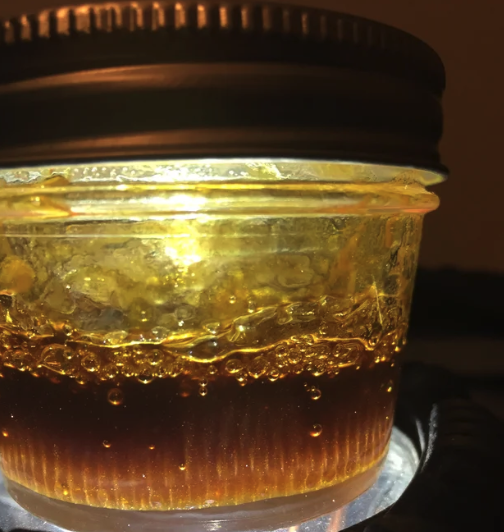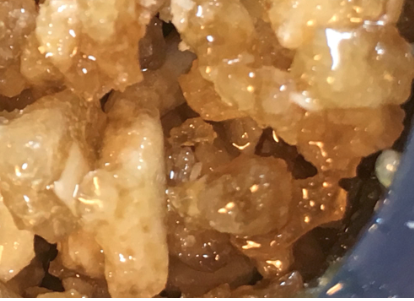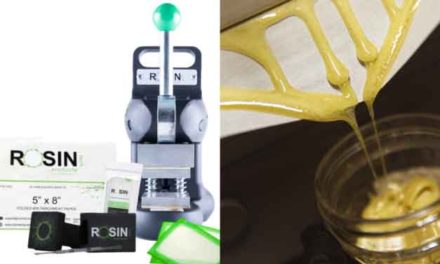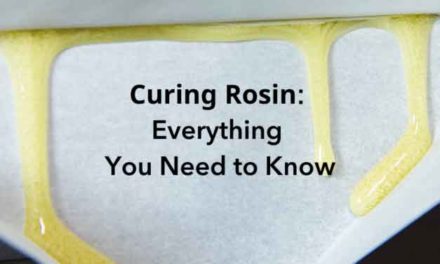Plant materials finding their way into your rosin can have a huge impact on the quality, flavor, and aroma of your concentrate. Because of this, rosin makers go out of their way to ensure they don’t end up in the final product.
Chief among these unwanted plant materials are fats and waxes, commonly referred to as lipids. But the term lipids gets thrown around a lot in rosin circles, so what are they exactly? And why are lipids so undesirable in rosin? Let’s take a closer look at lipids: fats, waxes, and rosin.
What are Rosin Lipids?
Lipid is a broad term that covers a huge variety of substances, and it also has a fairly complicated biochemical definition. But for the sake of simplicity, you can think of lipids as non-water soluble fats. Basically, they’re hydrophobic fats that don’t mix or dissolve well in water.
As mentioned, lipids include an enormous amount of different fats, waxes, and oils. In fact, almost all the cannabinoids in your rosin are lipids, THC and CDB included. Not to mention, terpenes are also a unique type of lipid, which means rosin is actually made almost entirely from lipids in one form or another. Therefore, it can be a little confusing when people refer to lipids, fats and waxes as unwanted elements in rosin.
What most people are referring too in this case is not the fats in the trichomes, but in the plant material. Lipids also make up a huge proportion of the cannabis plant, and they are primarily found in the outer membrane of each cell. Along with chlorophyll and cellulose, lipids that come from the plant are seen as undesirable components of your finished rosin. Ultimately, plant lipids are what people are referring to when they talk about fats and waxes in rosin, and not trichome lipids.

Why are Plant Fats and Waxes Undesirable in Rosin?
Of course the lipids found in trichomes are what we are trying to collect into rosin, however the lipids from the plant material can have a number of adverse effects on your end product. Firstly, an abundance of plant lipids will massively impact the flavor and aroma of your rosin, as those plant fats and waxes will get in the way and color the taste of your dab.
Too many plant lipids in your rosin will also likely lead to harsh hits when you dab it and will almost certainly leave behind gunky residue in your bowl. Lastly, plant lipids can have a negative effect on your rosin in the long term. Plant fats and waxes will often separate from rosin when stored for any length of time, and this tends to result in an inconsistent or cloudy appearance, which can be off putting to some.
How to Avoid Getting Plant Fats and Lipids in Your Rosin
Ok, so all plant materials, lipids included want to be avoided from getting into your rosin. But how do you do that? Well, if you’re getting an abundance of plant materials in your rosin then that’s a telltale sign that there is something wrong with your rosin making process. The vast majority of plant materials won’t be squeezed out if your technique is solid, and you are most likely being too heavy handed with either pressure, time, or temperature settings, using low grade old bud, or it’s a combination of those factors.
You can check out our complete guide for making rosin here, which covers everything you need to know, including setting correct time, temperature, and pressure settings. This is important because nailing your rosin technique will likely be all you need to do to eliminate plant lipids from your end product.
If you’re pressing from flower, it can be worthwhile experimenting with using micron filter bags to hold back unwanted plant materials if you’re still having issues. Or, you can graduate onto pressing rosin from dry-sift or bubble hash which contain little to no plant materials in the first place.
At the end of the day, it’s best to concentrate on perfecting your rosin technique first and foremost, as well as use killer fresh bud or hash. Then, you shouldn’t have a “lipid” problem.







